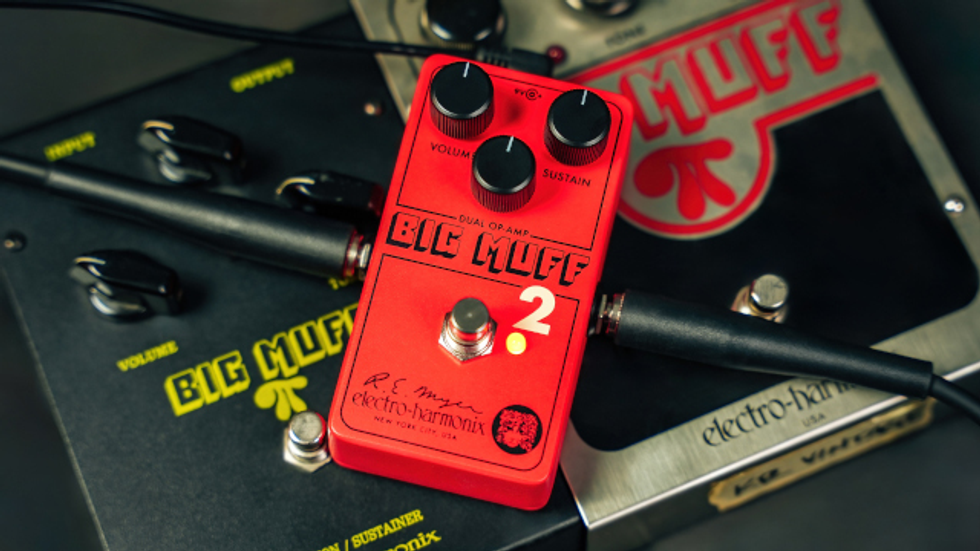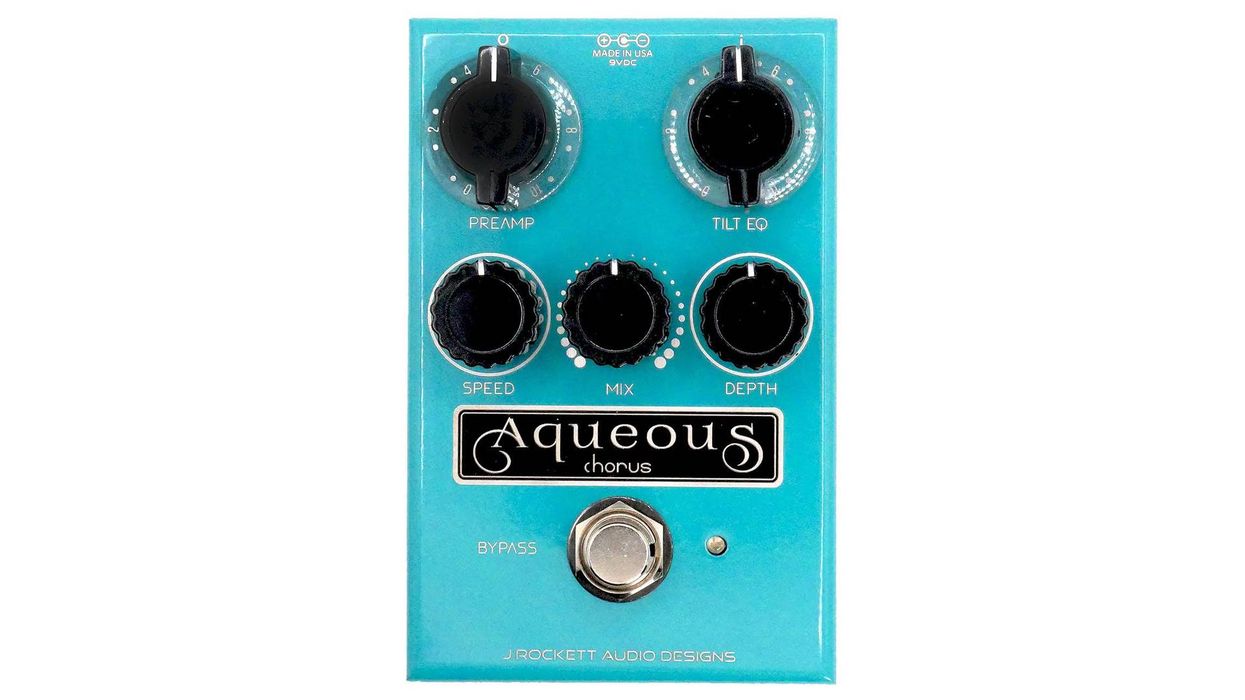There are guys that can fix your guitar and then there''s René Martinez. We sit down to talk all things guitar with one of the best techs in the business.
 It may be an understatement to say that life as a guitar tech is a stressful one.
It may be an understatement to say that life as a guitar tech is a stressful one. Spending long stretches living out of a tattered suitcase and shouldering the responsibility for keeping an artist''s gear - often including guitars, amps and pedals - in top form day in and day out can take its toll. Between the mid-set string changes and the challenge of finding replacement pots on a Saturday night, the seemingly endless truss rod tweaks to compensate for regional weather and tracking down an annoying hum that wasn''t present during sound check, there''s rarely any physical or emotional bandwidth left to enjoy the music - the reason most techs arrived in the first place. In a thankless music industry, stars'' fortunes can rise and fall in the blink of an eye and the lowly guitar tech is often forgotten in the mix.
Perhaps that is why René Martinez'' notoriety in the guitar world is so impressive; the non-descript, soft-spoken man working from his small workshop in Carrollton, Texas has made a name for himself as one of the most sought-after guitar technicians in music today. Beginning his storied career at Charley''s Guitar Shop in Dallas, then with a young Austin bluesman with the initials S.R.V., René has gone on to work with numerous artists, including Jimmie Vaughan, Edie Brickell, Mick Jones of Foreigner, Prince, Clint Black and Santana. René is now popularly known by his industry-bestowed title, "Tech to the Stars."
He spent his earliest years honing both his painting skills - beginning with slick car finishes - and his flamenco chops. Learning instrument repair in his early twenties, René discovered his aptitude for working with his hands; through his work at Charley''s Guitar Shop in the early eighties, he met Stevie Ray. By the time he left to go on tour with Vaughan in 1985, there was no looking back. From maintaining Stevie''s troublesome Fuzz Face to literally super gluing his fingers after strenuous performances, René proved that he was destined for the tech lifestyle.
Despite the music industry''s predilection for chaotic living, these days find René enjoying a rewarding balance. He remains heavily involved with guitars, and he takes good care of himself. He''s working with John Mayer and has released a variety of guitar care products, from polishes to string sets, honed from his years on the road. We were able to chat with René in his Texas workshop about his past, his tips and what''s next for a man who has consistently redefined what it means to be a "tech."
When did you take up guitar initially?
The guitar began for me at about eight or nine years old. One day I heard my father playing the guitar while my brothers and I were fooling around, so I went to listen. I asked him to teach me some chords and he showed me three: C, F and G major. When they put us to bed later, I stayed up with the guitar and learned those three chords. I was so fascinated with it, I couldn''t let it go, and I couldn''t wait until the next day when I could show my dad. And they were clean - it wasn''t just a few of the notes. I''ve never let it go since then.
We were reading in your biography that your music career started with classical guitar.
I was into flamenco guitar. A lot of people say flamingo, but it''s not the bird.
"He [Charlie Wirz] had heard about me through a friend of mine. He called me and said, "Do you know anything about acoustic 12-strings?" I said I did, so he brought me a guitar to see if I really knew what I was doing..."
Was that because of your background?
Not really; I grew up with the Beatles. My ethnicity is Mexican-American, and even though my folks played that stuff, I didn''t go there at all. I was immediately into C, F, G songs - which at the time meant "Twist and Shout" by the Beatles. But then I heard Eydie Gormé and Trio Los Panchos on a recording my parents had and those guys were playing some intricate nylon string guitar, and I said, "That''s what I want to do." So I started teaching myself and took some lessons.
How did you transition from that initial love of music into the tech side of the business?
I got into this actually from a car-painting business I was in when I was 18 years old. I was doing custom colors and paint jobs for motorcycles and cars and a guitar teacher of mine had a Mercedes-Benz he wanted painted. When I delivered it, a violinmaker there wanted to see the paint job and was so impressed that he asked if I had ever thought about refinishing guitars. He said, "It''s essentially what you''re doing, except that it''s with a guitar." He asked if I would be interested in giving it a try, and that''s how I got into repair. Fiddles were the first things I learned to disassemble and put back together; I worked on everything, from the smallest fiddles to the big double basses.
Did that work with the fiddle give you a unique philosophy or outlook when you started working on guitars?
It gave me the background of how to approach the work, how to put things together and how to do cosmetic things. Of course, when I was painting cars I knew how to mix my own paints and whatnot, so I was already pretty good at those things. Guitar work came about six months into my repair work. I was very good at what I did; I was working with my hands very well and I loved it.
But I also loved playing. I only stuck to guitar because I couldn''t play the fiddle. They wanted me to learn the fiddle because you have to play to set them up, but once I started playing, all the cats in a five-mile radius were gone. I just couldn''t play worth a darn and I didn''t like it, so I just became the guitar guy.
Was this initial repair work at Charley''s Guitar Shop?
Actually, I started at a place called Frets and Strings in Dallas - it''s no longer there. I wound up leaving there and setting up my own shop at home before getting a call from Charley Wirz, who was starting his own guitar shop. It was 1976 and he offered me a place to do repair work.
How did Charley get a hold of you?
He had heard about me through a friend of mine. He called me and said, "Do you know anything about acoustic 12-strings?" I said I did, so he brought me a guitar to see if I really knew what I was doing. I immediately took it apart and put it back together, and at that point he was impressed. I was only 21 or 22 years old at the time, but I became the head of Charley''s repair department.
What was it like working there during that time? It seems like everyone walked through those doors.
Well, it does now, but at that time nobody was going through those doors. We were a brand new, small, privately owned shop, and there were all of these other big shops around. At that time, if the owner of the shop didn’t have a name, nobody would come to see you. We had to go and shake a lot of trees; we hit a lot of clubs and places where bands were playing and guys slowly started coming over to check us out.
The name started to being circulated throughout Dallas and pretty soon people from out of town started giving us calls, and then big names started to appear at Charley’s Guitar Shop. The first guy to show up whose records I had heard for years was Chuck Mangione. His guitarist was looking for a certain guitar we had, so they both came in. As he was trying out the guitar, Chuck pulled out his flugelhorn and started playing. I remember thinking, “This is a great business to be in.”
Who else did you run into during your time there?
We ran into a lot of people. I remember Thin Lizzy was one of the groups that came through – their guitar player and some of the roadies came in and hung out. Local Dallas guys like Bugs Henderson came in a lot, but then we got some of the big groups coming in – calls from guys like Bill Wyman of the Talking Heads. That was big back then and people started to hear about us – we were the only real, true guitar shop in Dallas at that time. Even though a lot of stores had repair shops, they basically just did setups, while I did all phases of repair.
So we had some big names, but for the most part it was the local guys coming through. That’s how I met Jimmie Vaughan – he was in a local Texas band. From there, Stevie came in and we got to know each other. Around ‘79 or ‘80 I did some repair work for him, a refret. He was still very young at the time – I’m 55 now and he was two or three years younger than me.
I had relationships with a lot of guys at that time, but Stevie was definitely the one who changed my life forever, because I had no idea what he was going to do.
Was it through Stevie that you ended up out on the road?
Yeah, he was starting his band, Double Trouble, and they were traveling the country, playing in bars. That’s how most people got their start at that time; everyone was hitting the market from San Francisco to Florida to New York and back to San Diego. Around ‘83- ‘84, Stevie began getting more popular – record deals, playing with big names. He would come to Dallas and have his guitar worked on and we continued getting to know each other.
When Charley Wirz passed away in 1985, I think Stevie missed not having him around and he started to hang out at Charley’s even more. One night, he showed up at a lounge I was playing guitar at. I was surprised to see him, so I immediately took a break and asked him what he was doing. He said, “Oh, I just wanted to come down and hang out.” He invited me to come to the studio and help with his guitars while he was recording, so I swung down after my gig was over at nine that night.
We were hanging out in the studio and he asked me if I would consider going out on the road with him. My honest-to-God first answer was, “For what?” And he said it was to come out and do his guitars, and I asked him again, “You want me to work for you?” And he said yes. So I said wow, and thought about it and told him I didn’t know if I could do that. He asked me why not and I said I had a job fixing other people’s guitars, and I didn’t know if I could leave that. It was really overwhelming that he’d ask me to do something like that. Stevie said to go home and think about it, and about a week passed before he called me up and I passed again. He asked me to not let the thought go, and about two or three weeks later someone convinced me to just go and try it out.
So I tried it out; our first gig was on a ferryboat that traveled around the water while the band was performing. Afterwards I went home and decided I wanted to do it. I called Stevie and told him, and that was the beginning of my life as a guitar roadie. I had no clue what I was getting myself into.
 What was the living like?
What was the living like? Well, it was living out of a suitcase and not being familiar with your surroundings. Sleeping in motels and having to get a credit card – I didn’t have one at the time. You know, just figuring how it all worked out. We worked really hard and did lots of gigs.
So what were your duties with Stevie once you were finally on the road?
I asked him what my duties were, and he told me that all he wanted me to do was to tune my guitars, string them up and keep them up – he said he didn’t want me doing anything else. When I asked him why not, he said, “You’re a guitar player and I don’t want you hurting your hands. You’re too valuable.” I looked at him again and said, “Are you serious?” And he said that he was indeed serious. So that was that; they put me in a special place and said I wasn’t to do anything else. I was literally in the background the whole time.
After Stevie, what was your next gig?
Well, I couldn’t get a gig – I had the hardest time in the world looking for work. I didn’t know where to look and I didn’t know whom to ask. I had never even thought about it; I thought that was going to be the job that was going to last the rest of my life, because that’s what Stevie and I had talked about. I finally came across a gig with Foreigner as Mick Jones’ tech.
Were your duties the same with Mick?
My duties changed – I started doing everything. I would take them out of the case and tune them up and then get them back on the truck. In a way, it was the same – I took care of Mick Jones and only Mick Jones. I wound up taking care of other people’s stuff though, because the other techs didn’t know how to do all the repairs like I did. I actually ended up doing a lot.
You’ve worked with a lot of big artists since, including Prince. That had to have been a trip.
Oh yeah, it lasted one week. When I went to work there, I had a note from Dallas Schoo, U2’s current guitar tech. He’s a great tech, has been around for many years, and he left me a note that just said, “Good luck, René.” I thought, whatever, I’m only here for a week. I’ve been on the road for four months and I don’t care. The monitor guy immediately introduced himself to me and said, “You’ll be lucky if you last 24 hours.” I replied, “Well, that’s great because I just got off the road with another band, and I’d be happy to get home tomorrow.”
I ended up staying for the entire week duration and Prince was very impressed, telling all the guys that I used to work with Stevie and talking about his fantastic tone. They tried to get me to join their camp, but I declined. They called me up a few weeks later and asked me to be Prince’s full-time tech. I said, “No, I don’t really have the time, but I appreciate it.” They immediately called back and asked if it was a matter of money. And I said, “No, it’s not a matter of money. I said no and I mean no.” And that was really the end of that.
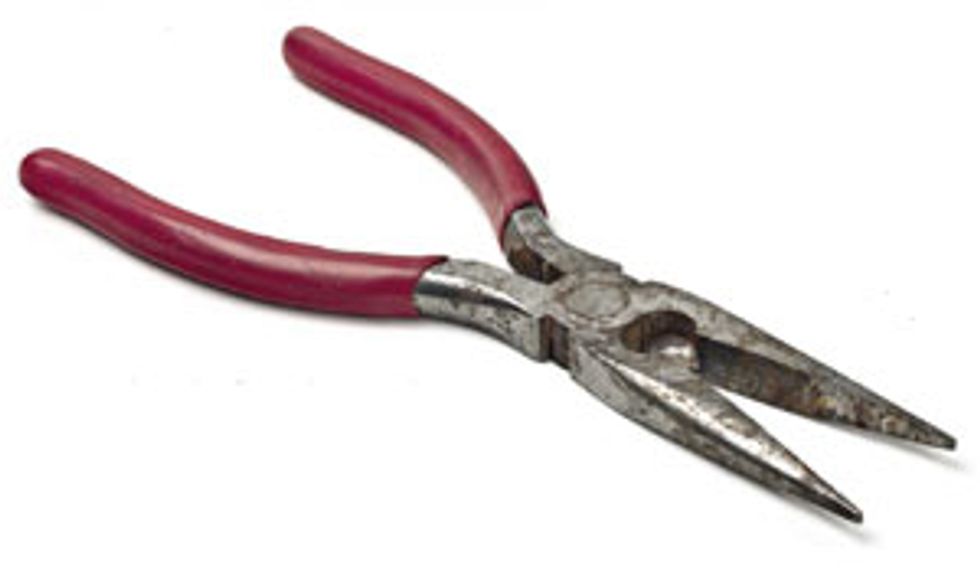 It sounds like they were extremely impressed with your work.
It sounds like they were extremely impressed with your work. They were extremely impressed, but I just really wanted to do something else.
So you’re out on tour with John Mayer now?
Yes, and it’s going great. I’ve been with him for about two years. I think I’m gonna stick around this camp for a while. He’s a really nice guy to work with and we get along great. So that’s it – I don’t plan on going anywhere else.
Does he have any special requests with his guitars?
Well, everybody has their own special requests. John likes the fact that I can set up his guitars in any way, shape or form. If anything’s wrong, I can do it – replacing pots, fixing a nut, setting it up, knowing all of his tunings. A lot of techs still need to take guitars to repair shops.
Is there anyone you’d like to work with but you haven’t had a chance to?
I think this is my calling here today, with John Mayer. It’s going to take quite a bit to pull me away from this gig. I really like working with John, because he really reminds me of someone I used to work with long ago. In terms of other people, there’s really never been anyone I’ve wanted to work with and wasn’t able to. There have been times where I’ve wished I’ve had work. [laughs]
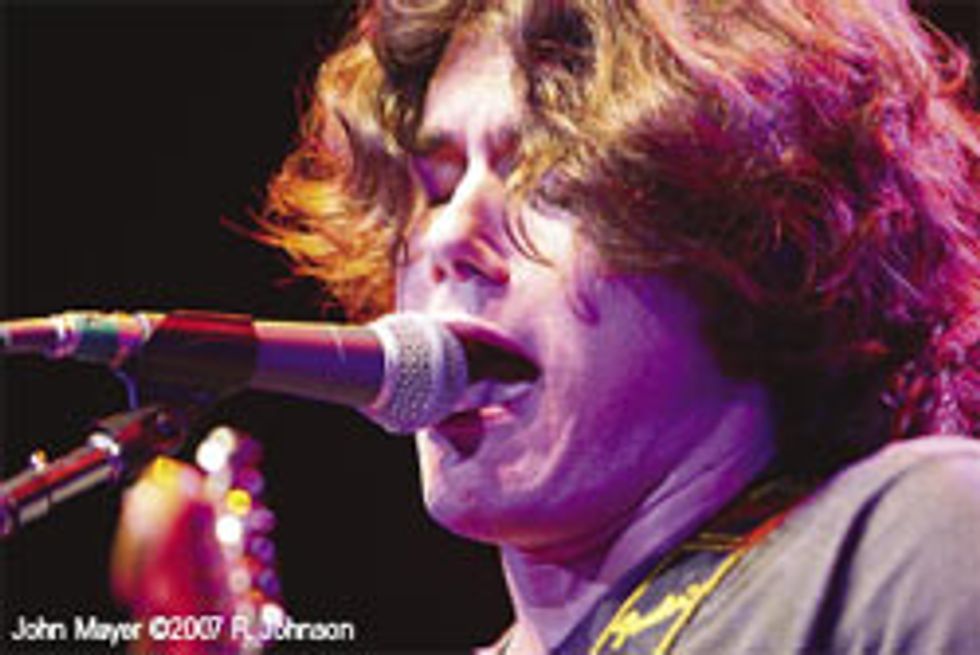 Do you still have time to play for yourself?
Do you still have time to play for yourself? Oh, I play all the time. I always keep a guitar close. If I can’t, then I can’t keep those guys sounding good. And that’s literally what I do today; I actually set up the thing, get the amplifier set right, tweak it all out and get it sounding great. Then I let my guy tweak it, if he knows what he’s doing. I get it close and all he’s got to do is turn a couple of knobs.
Do you like the life on the road or are you a homebody?
The road is okay. You have to adapt to it, but it’s not my favorite thing; I’d rather be home working on a guitar or coming up with an idea or helping someone with a guitar over the phone. I’ve got people who send me their guitars from everywhere. I’m doing a re-fret from Tennessee – he’s been waiting since February of 2007, and here I am working on it. I’m constantly working on guitars.
Have you ever had a desire to get in front of the curtain?
I am in front of the curtain and I’m also the star that shines behind the curtain. When I don’t walk out on the stage, there’s people asking, “Where’s René? Where’s your guitar tech?” I’m good at what I do and I like what I’m doing. I still play for my friends and for my wife, but now I’m up to different things and different ventures. I’ve been working on my products for the past ten years and they’re really starting to fly now.
Looking through the strings you offer on your website, we’ve noticed you run what would normally be considered in-between gauges. Can you describe the reasoning behind that?
The reason for that originated with Stevie. He was my best guinea pig, in terms of trying things out on the professional stage. I always used to say, “I wish they’d make a half gauge, because you just stretched the heck out of that string. It’s something else now.” And he’d say, “Yeah, I know – I seem to lose the tone after a few shows.” I thought, if someone would make half gauges, we’d have that tone.
I always wanted to have a set of strings that were true 9s. If you’re playing a 9 set and bending the 9 a lot, it’s no longer a true 9. With a 9.5, you’re able to stretch it out, and maybe it’s stretched out to a 9.2 or a 9.3, and it’s not that much – we’re talking hundredths of an inch here – but the tone is just… a little bit more. Then I thought, it would also be cool to make the cores of the wound strings bigger, because when the winding on a string goes bad, that’s when the string goes bad. So the core is bigger and the winding is smaller, but the size is the same. And it’s 100 percent nickel, not plated – the way it should be.
At the same time, there’s more tone in those bigger strings – the more mass you have, the more tone you’ll get. I had GHS Strings make me some and I sold them under my own label before GHS decided to pick them up. The Carlos Santana strings came about when he decided he really liked them.
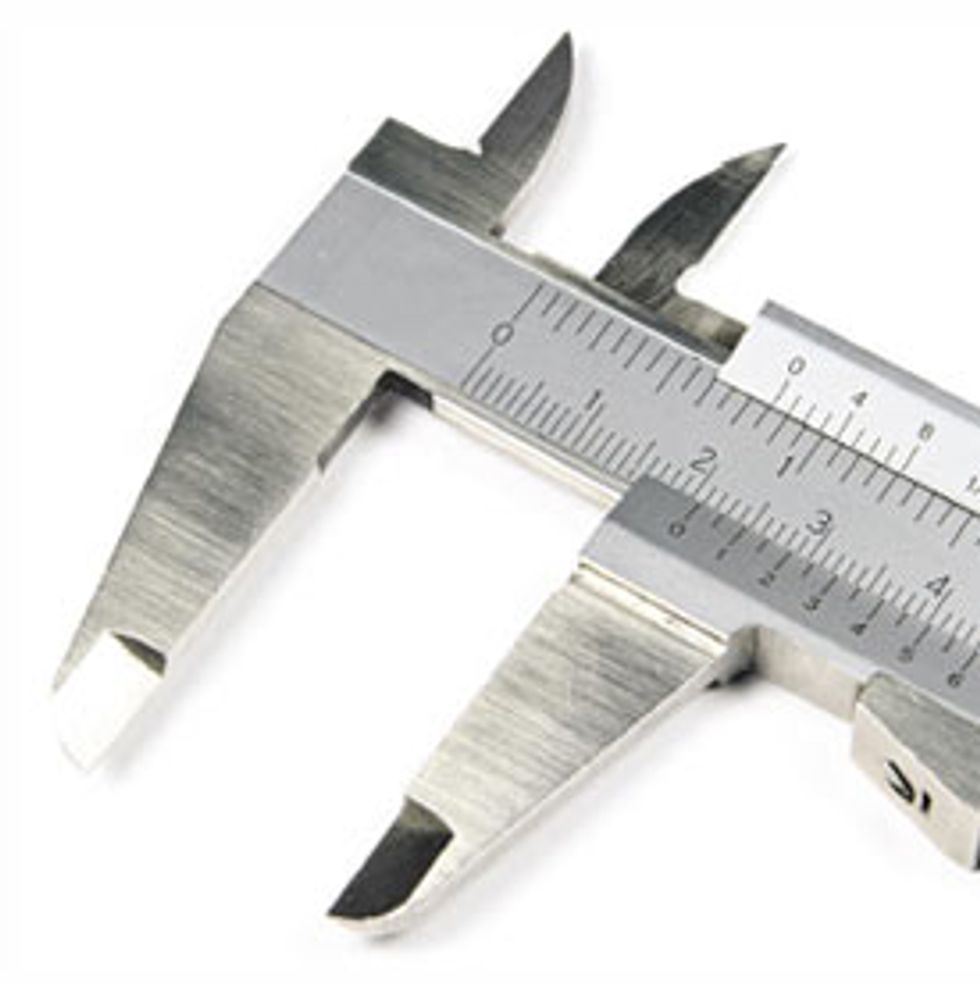 You mentioned briefly that strings should be pure nickel. Would you care to weigh in on the whole nickel versus plated controversy?
You mentioned briefly that strings should be pure nickel. Would you care to weigh in on the whole nickel versus plated controversy? I have played plated nickel strings myself, and my clients have used them too. All guitar strings sound great when you first put them on, but as you play they start to stretch out and mellow – that’s when you can hear a difference. With pure nickel, you can hear more brilliance that lasts longer, and that’s what I really like. You can hear a lot of twang on the electric guitar with pure nickel strings, especially a Stratocaster or Telecaster. It’s the best way to go.
I’ve just always been into the “best,” and when you’re on a professional stage, you’ll see all of these expensive guitars and amps, but with cheap strings and plugged into a cheap cable. Some people are like that. I got my taste of that a long time ago when I was a kid; some guy had a brand new Fender Precision Bass, which at the time would have cost $800 or $900, and he was complaining about the strings, which cost $25. They’re the same people that complain about expensive guitar cables. “Why should I pay $80 for a guitar cable?” Well, because they sound good.
Do you have any tips for our readers to keep their guitars running in top shape?
Always make sure your guitars are set up. Even if you set it up once, it doesn’t stay there all the time. To make sure, go buy yourself a 6” ruler with 32nds of an inch marked on it, and go by the height of the string at the first fret. Make sure that it’s the same all of the time. If you do that, your guitar will always play the same and play well.
I would also suggest finding a good repair guy and keeping a ruler handy, because it works. I always have guys tell me, “I just go by the feel. I know how it’s supposed to feel.” Well, I’ve been doing this for many years and if I didn’t have a ruler I could still set up a guitar, no problem, but the ruler is my gauge. It tells me for sure that I’m not lying. So if someone ever says, “Are you sure it’s at that height?” the ruler settles all the questions.
Something else that’s easy to do is change your strings often. I mean, not every day like I do, but it will do your guitar good if you change them frequently. Even for people who don’t have a lot of money and would rather change one string at a time – just change them all at once! Don’t leave them on there and keep playing them, because the guitar will sound like crap. People will say, “My strings are buzzing,” and when you find out the strings are six months old, that’s an easy fix.
When you’re out on the road and you guys are in the middle of a tour, how often do you set up a guitar? If you’re going from Omaha back down to Texas, and there’s a climate change, are you setting the main guitars up every day?
Yes, that is my job; I keep on top of my guitars. If you don’t, sometimes the guy will feel something and say something about it in a middle of a show. Then you’re trying to set up that guitar and it breaks your concentration. You’ve got plenty of time beforehand to pull that ruler out and check everything – intonation, height. If I’m a professional technician, then that’s what I do. This is the way I do my thing, this is why people hire me and it’s why I stay with people for a long time.
When you’re setting up a guitar, how close do you get the intonation? Do you get freaked out about it, or do you just get it close and let the player tune it in?
I’m not real anal about it, but I do know how to make it work. There are times when you can’t get a string in tune and it’s as simple as that. As far as intonation is concerned, you’re supposed to get the chime at the 12th fret and a note at the 12th and match those two, but if you hear something out of tune, the problem is likely the magnets pulling too much and making it sound off. If you can’t get it in tune, you should know why and what to do, because it’s got to be dead on.
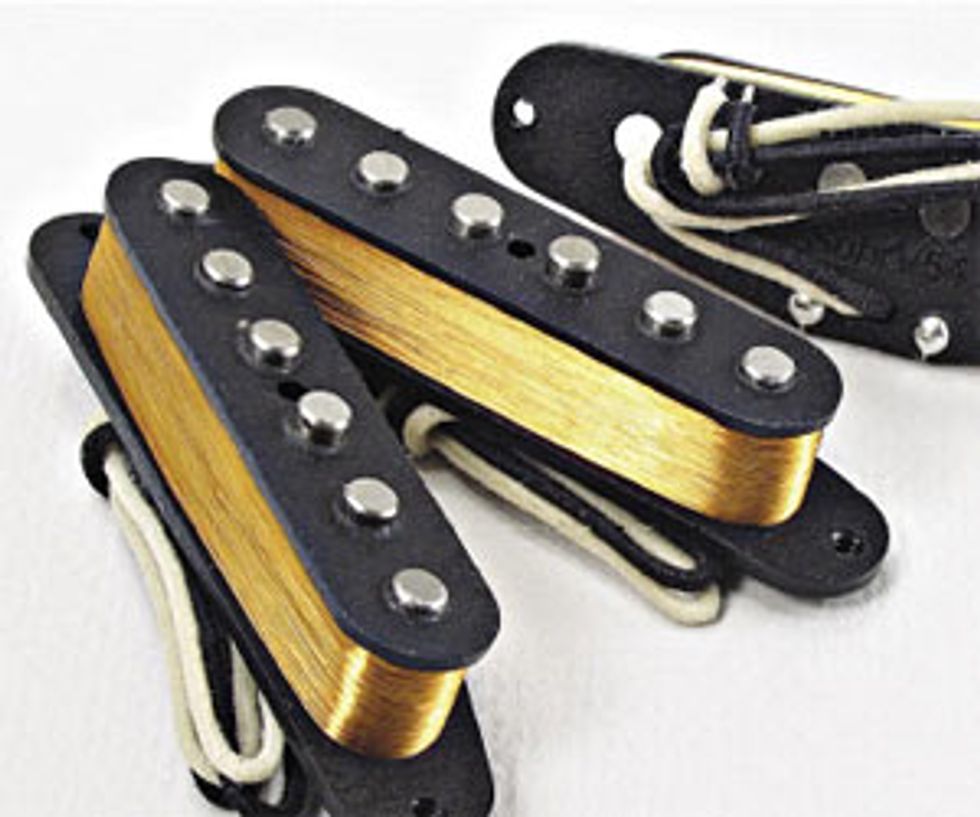 You’ve developed a product called GraphitALL, which is a popular nut and trem lubricant. What was its origin?
You’ve developed a product called GraphitALL, which is a popular nut and trem lubricant. What was its origin? It came from the first years of my repair work. The violinmaker I worked for would always grab a #2 pencil and pencil in the nut on all of the fiddles. He explained that strings sometimes get caught in the ebony in the nut, and the graphite made it easier for the strings to slide over. I started to use a pencil on guitar nuts, but they were impractical because I sometimes couldn’t get the pencil inside the first and third slot. So I came up with powdered graphite and put it in there, but then it would just blow away, because it was powder. Then I came up with a concoction mix and GraphitALL was created.
We also saw that you offer a 6-way signal splitter for different amp configurations. Do you still hand wire them?
I build them all myself and test each one before they’re sent out, so if anybody calls because something happened, I’m to blame if they don’t work. It is a simple, passive device – it doesn’t require batteries or electricity, and it’s the same thing we used when I worked with Stevie.
What other products do you hope to debut in the future?
I would like to do some other things with strings, other than the electric guitar strings that are out right now. I do have some bass strings that GHS offers called Taper Core, and I’m working on a set of flamenco guitar strings that’ll hopefully be out sometime next year. I’d like to do a lot of other stuff, as far as products are concerned – I just haven’t found the time because I travel quite a bit. I just dream about these things when I am on the road. If I have a problem with equipment, I’ll say, “Man, I wish I had this to fix it,” and that’s how my products get created.
You’ve had quite a career in the business. Do you have any wisdom for young techs?
Don’t be a know-it-all. It’s tasteful to not know everything, but to find an answer to everything that’s wrong. If you have a problem you’ve never encountered before, the only way to fix it is to get in there and figure it out – that experience will help you out in the future. Believe me, in the years I’ve been in the business it’s happened a few times and everyone thought I was a god, but it’s just because I’ve already encountered those problems. Don’t get a fat head about it and just try to remember what you learned.
If you weren’t working on guitars, would you still be working with your hands?
Yeah, I learned my calling in life from a young age. By the time I was 18 I wanted to be involved in music. I asked myself when I was 18, “What’s the easiest thing I can do right now?” I had a guitar in my hand and I thought to myself that playing the guitar was the easiest thing I knew how to do. With that, I knew that it was my calling and I would do it the rest of my life. And so far, I think I was right, because that’s what I’m doing.
| René on Pickup Height Pickup height is one of those instrument tweaks that has managed to spawn two major schools of thought: those who think it is intimately intertwined with tone and those who prefer to set it and forget it. While René Martinez straddles both camps, he has one foot firmly in the latter, saying, “I tend to let the pickup do its thing. When I was working with Stevie, I would set the pickup height for certain things and we would constantly change it, but really, people need to let the pickup do what it’s supposed to do: pick things up.” “Sometimes the tone and the magnet are two different things. What I mean by that is sometimes the magnet is stronger than the tone you want – if you get the magnet closer, that doesn’t necessarily mean you’re going to get a better tone, it just means the magnet is going to pull on things more,” René says. When it comes to setting up a guitar, he basically sets the pickup as low as it will go and brings it back up until the pickups produce a nice, full tone. “That’s just the guitar at that point and that’s how it’s going to sound. If you still don’t like what you’ve got there, you may need to try a different pickup.” |
René Martinez
Texasguitarwhiz.com









![Rig Rundown: Russian Circles’ Mike Sullivan [2025]](https://www.premierguitar.com/media-library/youtube.jpg?id=62303631&width=1245&height=700&quality=70&coordinates=0%2C0%2C0%2C0)









